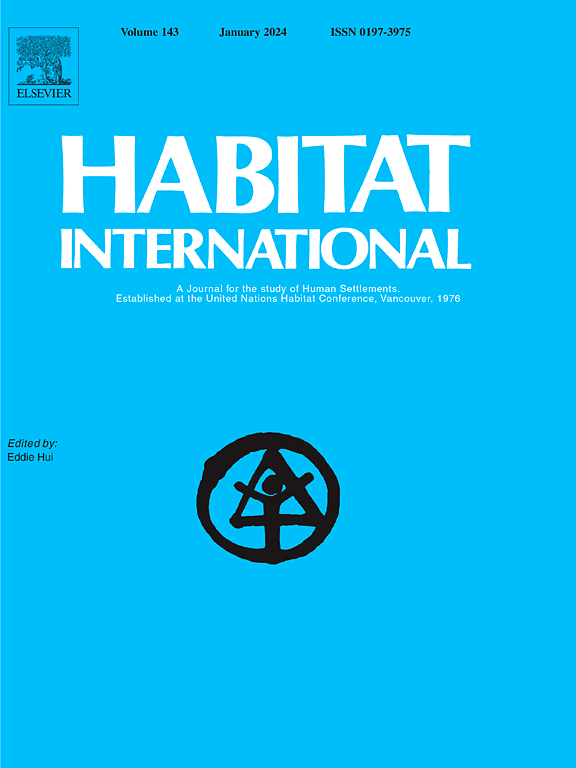Grid-level assessment on spatial equity in access to urban public facilities by vulnerable groups based on the multi-source data
IF 6.5
1区 经济学
Q1 DEVELOPMENT STUDIES
引用次数: 0
Abstract
In the context of promoting human-centered sustainable cities and communities, achieving spatial equity in the development of urban public facilities (UPF) plays an essential role and faces a significant challenge. Although the regional and social disparity of UPF's distribution is well documented, researchers seldom consider the spatial distribution disparities between multiple types of UPF and vulnerable groups at a fine scale. This study built a comprehensive evaluation framework with a fine-grained model, which is comprised of grid-based partitioning, multi-source data crawling, cumulative opportunity model, and spatial statistical analysis, to analyze spatial equity in Guangzhou, China. The accessibility to UPF and the social vulnerability index (SVI) are measured utilizing the cumulative opportunity measure and principal component analysis (PCA). This study, therefore, analyzed the imbalance between the distribution of UPF and vulnerable groups. Moreover, the study accurately identified spatial inequity areas using the Gini coefficient and bivariate Moran's I. The results show that numerous areas within the study area have limited opportunities to access UPF. Nevertheless, the formation of multiple urban centers during urbanization has increased the diversity of accessible types of UPF within the community life unit. In addition, due to the aging population in the old city center and the complex population structure of urban villages, the areas in the old town often become high-value clusters spatially with SVI. In particular, due to planning problems caused by urban villages, these areas are often prone to become spatial inequity areas characterized by "high SVI - low comprehensive accessibility." This evaluation framework is user-friendly and suitable for application in other cities, helping to identify spatial inequity areas that require planning intervention and priority.
基于多源数据的弱势群体城市公共设施空间公平性网格级评价
在促进以人为中心的可持续城市和社区的背景下,实现城市公共设施(UPF)发展的空间公平发挥着至关重要的作用,也面临着重大挑战。虽然UPF分布的区域差异和社会差异已被充分研究,但研究人员很少在精细尺度上考虑不同类型UPF和弱势群体之间的空间分布差异。基于网格划分、多源数据抓取、累积机会模型和空间统计分析,构建了广州市空间公平综合评价框架。利用累积机会测度和主成分分析对UPF可及性和社会脆弱性指数(SVI)进行测度。因此,本研究分析了UPF分布与弱势群体之间的不平衡。此外,利用基尼系数和双变量Moran’si对空间不平等区域进行了准确的识别。结果表明,研究区内的许多区域获得UPF的机会有限。然而,城市化过程中多个城市中心的形成增加了社区生活单元内可达UPF类型的多样性。此外,由于老城区中心人口老龄化和城中村复杂的人口结构,老城区区域往往在空间上成为具有SVI的高价值集群。特别是,由于城中村的规划问题,这些地区往往容易成为“高SVI -低综合可达性”的空间不平等地区。该评估框架用户友好,适合在其他城市应用,有助于确定需要规划干预和优先考虑的空间不平等领域。
本文章由计算机程序翻译,如有差异,请以英文原文为准。
求助全文
约1分钟内获得全文
求助全文
来源期刊

Habitat International
Multiple-
CiteScore
10.50
自引率
10.30%
发文量
151
审稿时长
38 days
期刊介绍:
Habitat International is dedicated to the study of urban and rural human settlements: their planning, design, production and management. Its main focus is on urbanisation in its broadest sense in the developing world. However, increasingly the interrelationships and linkages between cities and towns in the developing and developed worlds are becoming apparent and solutions to the problems that result are urgently required. The economic, social, technological and political systems of the world are intertwined and changes in one region almost always affect other regions.
 求助内容:
求助内容: 应助结果提醒方式:
应助结果提醒方式:


